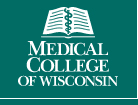Efficacy of Panobinostat in Patients With Relapsed and Bortezomib-refractory Multiple Myeloma
| Status: | Completed |
|---|---|
| Conditions: | Blood Cancer, Hematology |
| Therapuetic Areas: | Hematology, Oncology |
| Healthy: | No |
| Age Range: | 18 - Any |
| Updated: | 12/23/2017 |
| Start Date: | June 2010 |
| End Date: | February 2014 |
A Phase II, Multi-center, Single Arm, Open Label Study of Panobinostat in Combination With Bortezomib and Dexamethasone in Patients With Relapsed and Bortezomib-refractory Multiple Myeloma
This study is designed to assess the effectiveness of the combination of Panobinostat plus
Bortezomib and Dexamethasone in patients with relapsed and bortezomib refractory Multiple
Myeloma.
Bortezomib and Dexamethasone in patients with relapsed and bortezomib refractory Multiple
Myeloma.
This is a phase II, two stage, single arm, open label, multi-center study of oral PAN in
combination with BTZ/Dex in patients with relapsed and refractory multiple myeloma, who are
bortezomib-refractory and have received at least 2 prior lines of therapy. Patients must have
been exposed to an iMID (lenalidomide or thalidomide) and progressed on or within 60 days of
their last BTZ-containing line of therapy.
combination with BTZ/Dex in patients with relapsed and refractory multiple myeloma, who are
bortezomib-refractory and have received at least 2 prior lines of therapy. Patients must have
been exposed to an iMID (lenalidomide or thalidomide) and progressed on or within 60 days of
their last BTZ-containing line of therapy.
Inclusion Criteria:
1. Patient has a previous diagnosis of multiple myeloma, based on IMWG 2003 definitions.
All three of the following criteria must have been met:
- Monoclonal immunoglobulin (M component) on electrophoresis, and on immunofixation
on serum or on total 24 hour urine
- Bone marrow (clonal) plasma cells ≥ 10% or biopsy proven plasmacytoma
- Related organ or tissue impairment (CRAB symptoms: anemia, hypercalcemia, lytic
bone lesions, renal insufficiency, hyperviscosity, amyloidosis or recurrent
infections)
2. Patient must have relapsed and refractory MM and must require treatment for the
relapsed disease
3. Patients must have received at least 2 prior lines of therapy which include an IMiD
(thalidomide or lenalidomide)
4. Patient must be refractory to the last bortezomib containing line of therapy given in
the relapsed and refractory setting defined as:
- having progressed on or within 60 days of the last bortezomib-containing line of
therapy
5. Patient has measurable disease on M protein at study screening defined by at least one
of the following measurements as per thresholds clarified in IMWG 2003 disease
definitions (Kyle, et al 2003):
- Serum M-protein ≥ 1 g/dL (≥ 10 g/L)
- Urine M-protein ≥ 200 mg/24 h
6. Patients treated with local radiotherapy with or without concomitant exposure to
steroids for pain control or management of cord/nerve root compression, are eligible.
Two weeks must have lapsed since last date of radiotherapy, which is recommended to be
a limited field. Patients who require concurrent radiotherapy should have entry to the
protocol deferred until the radiotherapy is completed and 2 weeks have passed since
the last date of therapy
7. Patient's age is ≥ 18 years at time of signing the informed consent
8. Patient has an Eastern Cooperative Oncology Group (ECOG) performance status (PS) of ≤
2
9. Patient has the following laboratory values within 3 weeks before starting study drug
(lab tests may be repeated, as clinically indicated, to obtain acceptable values
before screen fail is concluded but supportive therapies are not to be administered
within the week prior to screening tests for absolute neutrophil count or platelet
counts)
- Absolute neutrophil count (ANC) ≥ 1.0 x 109 /L
- Platelet count ≥ 70 x 109 /L
- Serum potassium, magnesium, phosphorus, within normal limits (WNL) for
institution
- Total calcium (corrected for serum albumin) or ionized calcium ≥ LLN, and not
higher than CTCAE grade 1 in case of elevated value
Note: Potassium, calcium, magnesium, and/or phosphorus supplements may be given to
correct values that are < LLN:
- AST/SGOT and ALT/SGPT ≤ 2.5 x ULN
- Serum total bilirubin ≤ 1.5 ULN (or ≤ 3.0 x ULN if patient has Gilbert syndrome)
- Serum creatinine levels ≤ 2.5 x ULN, or calculated creatinine clearance ≥ 40
ml/min
10. Patient has provided written informed consent prior to any screening procedures
11. Patient is able to swallow capsules
12. Patient must be able to adhere to the study visit schedule and other protocol
requirements
13. Women of childbearing potential (WOCBP) must have a negative serum pregnancy test at
within 7 days prior to start of study treatment
Exclusion Criteria:
1. Primary refractory disease (patients that never reached at least an MR for over 60
days under any prior therapy)
2. Patients who have a history of prior MM treatment with a DAC inhibitor including
panobinostat
3. Patients who have had prior allogeneic stem cell transplantation and show evidence of
active graft-versus-host disease that requires immunosuppressive therapy
4. Peripheral neuropathy ≥ CTCAE grade 2
5. Patients who will need valproic acid for any medical condition during the study or
within 5 days prior to the first administration of study drug / treatment or who
cannot be switch to safely to alternative anti-epileptic medication
6. Patients who have impaired cardiac function including any of the following:
- Congenital long QT syndrome, complete left bundle branch block or use of a
permanent cardiac pacemaker, history or presence of ventricular tachyarrhythmias,
clinically significant resting bradycardia (< 50 beats per minute). Right bundle
branch block + left anterior hemiblock (bifascicular block)
- QTcF > 450 msec on screening ECG
- Presence of unstable atrial fibrillation. Patients with stable atrial
fibrillation are allowed in the study provided they do not meet other cardiac or
prohibited drug exclusion criteria
- Previous history of angina pectoris or acute MI within 6 months
- Congestive heart failure (New York Heart Association functional classification
III-IV)
- Patient has any other clinically significant cardiovascular disease (e.g.
uncontrolled hypertension)
7. Patient has an impairment of gastrointestinal (GI) function or GI disease that may
significantly alter the absorption of panobinostat (e.g., ulcerative disease,
uncontrolled nausea, vomiting, malabsorption syndrome, obstruction, or significant
small bowel resection)
8. Patient has unresolved diarrhea ≥ CTCAE grade 2
9. Patients who have any other concurrent severe and/or uncontrolled medical condition(s)
including, but not limited to: uncontrolled diabetes mellitus, active or uncontrolled
infection, chronic obstructive or chronic restrictive pulmonary disease (e.g. dyspnea
at rest from any cause), symptomatic thyroid dysfunction, significant bleeding
tendency, that could cause unacceptable safety risks or compromise compliance with the
protocol
10. Patients who are using medications that have a known relative risk of prolonging the
QT interval or of inducing Torsade de Pointes, where such treatment cannot be
discontinued or switched to a different medication prior to starting study drug
11. Women who are pregnant or breast feeding
12. Patients with evidence of another malignancy not in remission or history of such a
malignancy within the last 5 years (except for treated basal or squamous cell
carcinoma, or in situ cancer of the cervix)
13. Patients who have received prior to starting study treatment either radiation therapy
to > 30% of marrow-bearing bone within 4 weeks; myelotoxic chemotherapy within 4
weeks; or immunotherapy within 8 weeks; or who have not yet recovered from side
effects of such therapies
14. Patients with any significant history of non-compliance to medical regimens or
unwilling or unable to comply with the instructions given to him/her by the study
staff
15. Use of chemo-, biologic or immunologic therapy and/or other investigational agents
while the patient is on study treatment.
16. Patient taking any anti-cancer therapy concomitantly (bisphosphonates are permitted
only if commenced prior to the start of screening period)
We found this trial at
13
sites
Medical College of Wisconsin The Medical College (MCW) of Wisconsin is a major national research...
Click here to add this to my saved trials
Montefiore Medical Center As the academic medical center and University Hospital for Albert Einstein College...
Click here to add this to my saved trials
University of California at Los Angeles The University of California, Los Angeles (UCLA) is an...
Click here to add this to my saved trials
12902 USF Magnolia Dr
Tampa, Florida 33612
Tampa, Florida 33612
(888) 663-3488

H. Lee Moffitt Cancer Center & Research Institute Moffitt Cancer Center in Tampa, Florida, has...
Click here to add this to my saved trials
Atlanta, Georgia 30322
Click here to add this to my saved trials
Click here to add this to my saved trials
Dana-Farber Cancer Institute Since it’s founding in 1947, Dana-Farber has been committed to providing adults...
Click here to add this to my saved trials
Click here to add this to my saved trials
Click here to add this to my saved trials
1211 Medical Center Drive
Nashville, Tennessee 37212
Nashville, Tennessee 37212
Click here to add this to my saved trials
Click here to add this to my saved trials
75 Veronica Avenue
Somerset, New Jersey 08873
Somerset, New Jersey 08873
Click here to add this to my saved trials
291 Campus Drive
Stanford, California 94305
Stanford, California 94305
Click here to add this to my saved trials



